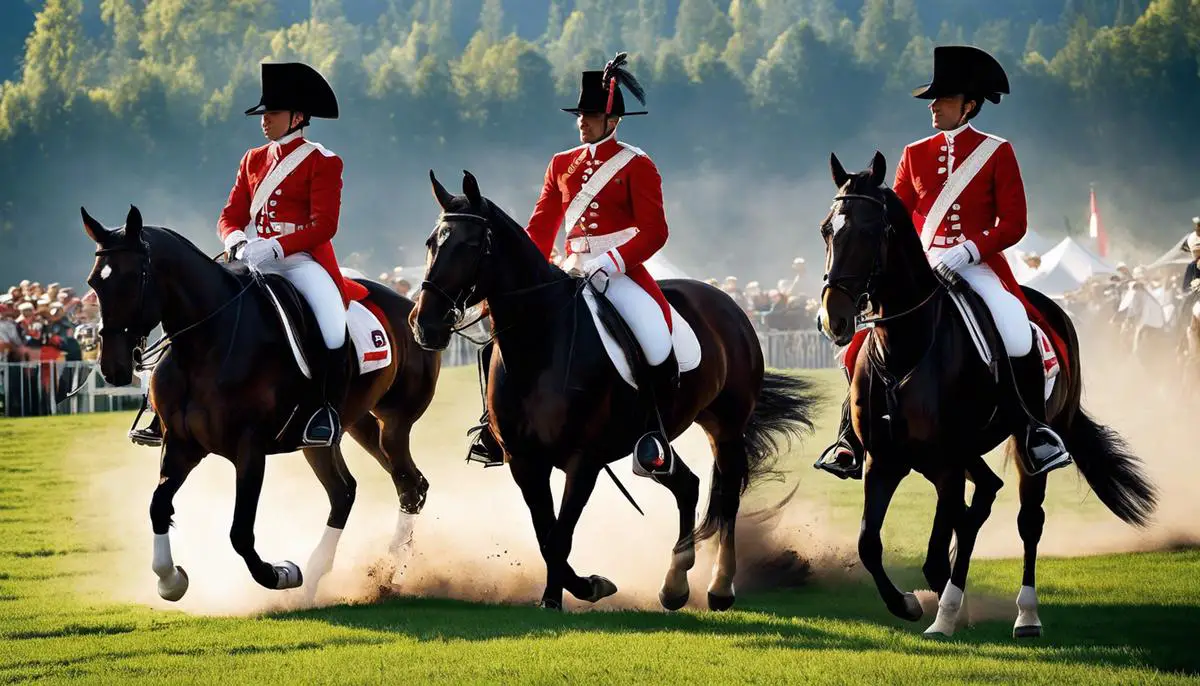The majestic beauty of Switzerland’s landscape melds harmoniously with the rhythmic cadence of hoofbeats, a testament to the nation’s profound equestrian heritage. Far more than a mere mode of transportation, horses are integral to Swiss culture, symbolizing a legacy of grace, endurance, and precision. This essay embarks on an exploratory canter through the annals of Swiss equestrian history, offering an in-depth look at the breeds that have shaped the country’s identity, and the athletic pursuits that continue to captivate enthusiasts around the globe. From the cobblestone avenues echoing with the clip-clop of medieval cavalry to the thunderous applause in contemporary show arenas, the story of Swiss horses and riders is one of passion, innovation, and a deep respect for the symbiotic relationship between human and steed.
Table of Contents (Horspedia)
History of Swiss Equestrian Culture
Swiss Equestrian Culture: A Canter Through History
Strap into your saddle and prepare for an amiable trot through the rich tapestry of Swiss equestrian culture, where tradition and modern innovation ride side by side.
The Swiss love affair with horses gallops back centuries, deeply rooted in the pastoral landscapes and the alpine life. Initially, horses in Switzerland were paramount for medieval warfare, agriculture, and transportation. These steadfast companions labored alongside farmers, carried knights into battle, and were a symbol of status and wealth.
The turning point in Swiss equestrian culture came with the demise of the heavy cavalry. As the need for warhorses waned, the focus shifted towards breeding lighter, more agile horses. Thus began the golden age of horse breeding in Switzerland where breeds like the Freiberger emerged – a horse bred in the Jura mountains, renowned for its versatility and gentle nature, perfect for both riding and driving.
Equestrian sports have a storied presence in Swiss culture. The festive “Marché-Concours” in Saignelégier, which commenced in 1897, is a testament to the enduring equestrian spirit. This competition brings together breeders, riders, and spectators in a celebration of the Freiberger breed, involving traditional riding competitions, carriage races, and even a parade showcasing ornately decorated horses.
Jumping forward in time, equestrian disciplines in Switzerland have expanded into a sophisticated array of sports, inclusive of everything from show jumping and dressage to endurance riding. Swiss riders like Steve Guerdat have skyrocketed to fame, with equestrian enthusiasts cheering heartily as they champion a blend of skill, tradition, and cutting-edge techniques.
Today’s Swiss equestrianism is also highlighted by a strong commitment to welfare and respect for the horse. This modern ethos flows through every stream of the culture. Equestrian facilities boast state-of-the-art design tailored to horse welfare, and training methods now emphasize a more profound, empathetic partnership between horse and rider.
The annual Hublot Polo Gold Cup in Gstaad channels the Swiss penchant for elegance and precision into the ancient sport of polo, showing that Swiss equestrian culture is as versatile as the horses bred on the land.
Encompassing everything from ranching in the rugged Alpine valleys to the precision and poise of Olympic-level competition, Swiss equestrian culture truly showcases an evolution that honors its past while gracefully leaping into the future.
As the contemporary Swiss equestrian scene continues to flourish, one thing remains certain: the love for the horse and respect for its role in Swiss history stands as a timeless testament to the enduring legacy that these magnificent creatures hold within the heart of Swiss tradition. The clattering of hooves on cobblestone may be a rare sound in today’s urban Switzerland, but the pulse of equestrian life beats as strong as ever in the rural heartlands and the competition rings, where history and modernity ride in perfect harmony.
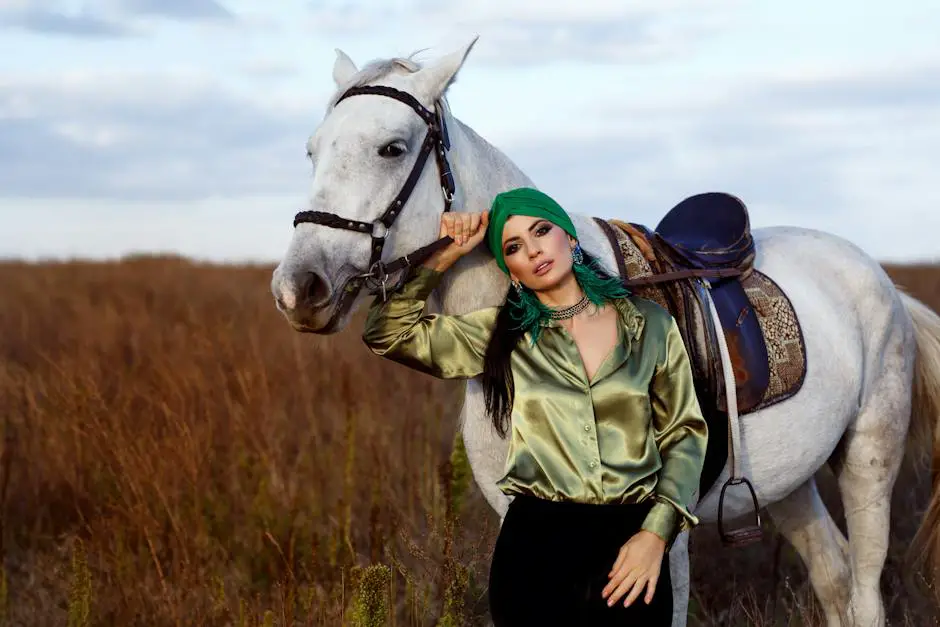
Swiss Horse Breeds
Diving deeper into the equine heart of Switzerland, there are other native breeds that stand as a testament to the country’s rich equestrian heritage. A remarkable breed that gallops through the Swiss meadows with as much grace as historical significance is the Haflinger.
Originating from the mountainous regions of neighboring Austria, the Haflinger, also known in Switzerland as the Avelignese, found a second home in the Swiss countryside. Recognized for their distinctive chestnut coats and flaxen manes, these hardy beauties carry a certain allure that captures the eye of horse enthusiasts and laypersons alike.
What makes the Haflinger exceptional among other breeds is their dual-purpose nature. Originally bred for mountain agriculture, their sturdy build and good-natured temperament have since steered them into the limelight of therapeutic riding programs. Their sure-footedness and calm demeanor present a reliable partner for individuals with disabilities, offering a supportive bond that enriches lives beyond the stable yard.
Moreover, the lightweight and compact frame of Haflingers lend them a surprising agility, making them suitable for various riding disciplines. They exhibit elegance in dressage rings and are increasingly popular in driving competitions, where their strength and endurance come into full play. It’s not uncommon to see these affable equines winning hearts in family settings as well, due to their patient character and forgiving nature with inexperienced riders.
Turning our focus to another Swiss breed, the elusive Eringer cattle may be famed in agricultural circles, but the Eringer horses too hold a special place in Switzerland’s equestrian roster. These horses, though less numerous than their bovine counterparts, share a resilience well-suited to the tough alpine environment. Known for being headstrong and spirited, Eringer horses have bolstered the ranks of mountain farmers, contributing to the rugged agricultural lifestyle that defines much of Switzerland’s pastoral identity.
Yet, the conversation about Swiss breeds would be incomplete without tipping a hat to the rare and majestic Swiss Warmblood. Though not as ubiquitous as the Freiberger or Haflinger, the Swiss Warmblood reflects a tradition of selective breeding that marries both form and function. These horses epitomize the synthesis of foreign and native bloodlines, resulting in a horse with heightened athletic capabilities. Under the watchful eyes of Swiss breeders, these horses have been sculpted into formidable competitors that excel in the athleticism demanded by higher-level show jumping and dressage.
The epitomes of power and grace, Swiss Warmbloods manifest the meticulous care and strategic breeding that has propelled Switzerland to notable ranks within international equestrian spheres. These horses represent a lesser-known chapter of Swiss equestrian excellence, but to those within the equestrian community, they are respected as a symbol of Swiss precision in equine form.
Switzerland’s horse breeds may not be numerous, but they embody the character and landscape of the country itself—robust, multifaceted, and steeped in tradition. Each breed, with its own special traits and historical backdrop, reinforces the bond between the Swiss people and their horses—a relationship founded on mutual respect and shared history. Whether it’s the versatility of the Freiberger, the therapeutic charm of the Haflinger, the stoic nature of the Eringer, or the competitive spirit of the Swiss Warmblood, these equines are not just animals; they’re an integral part of the cultural tapestry that is Switzerland.

Equestrian Sports and Competitions
Diving into the heart of equestrian enthusiasm, one cannot overlook the thrilling events and friendly competitive spirit that embody the essence of Swiss equestrian sports. Among these, eventing shines with multi-disciplinary challenges that truly test the synergy between horse and rider, navigating dressage, cross-country, and show jumping phases. It’s where endurance meets elegance and strategy in a dance of athletic prowess.
Switzerland’s landscapes offer ideal backdrops for the rigors of eventing, with top competitions drawing crowds of equestrian aficionados annually. The CCI (Concours Complet International) in Avenches is a spectator’s delight, showcasing horse-rider teams tackling the trifecta of equestrian disciplines across both amateur and professional levels. It’s a synergy of trust and ability laid bare for all to admire.
Additionally, driving competitions hold a special place in Swiss equestrian circles, where the clatter of hooves and the charm of carriage driving come to life. Impeccable teamwork is vital as pairs, fours, and sometimes even larger teams of horses are directed through precision courses. The CAI (Concours Attelage International) hosted in various Swiss cities elevates the venerated tradition of horse-drawn carriages into a compelling modern sport.
For those drawn to the serene bond between horse and human, vaulting offers a blend of gymnastics and dance performed on the moving horse’s back. Swiss vaulters are often among the crème de la crème on the international stage, with the CVI (Concours de Voltige International) in Bern showcasing breathtaking performances embodying grace, strength, and harmony.
Reining, though a newer equestrian discipline in Switzerland, has carved its niche with the Western riding community, making it one of the up-and-coming sports to watch. With competitions governed by the Swiss Western Riding Association (SWRA), enthusiasts revel in the spectacle of spins, stops, and precise patterns that epitomize the American cowboy spirit within the Swiss equestrian tableau.
Of course, one cannot talk about Swiss equestrian sports without touching on the various regional and national horse races, which add an electrifying pace to the equestrian world. Blending tradition with the thrill of speed, the White Turf races held in St. Moritz stand out, taking place on a frozen lake and combining flat racing, trotting, and Skikjöring – where skiers are pulled by horses – a true testament to the adventurous spirit infused in Swiss equestrian activities.
As the Swiss landscape continues to be dotted with horses of all breeds and the people who cherish them, its equestrian sports and competitions remain emblematic of a nation’s devotion to equine partnership. It is here where tradition gallops alongside innovation, and where every horse and rider duo has the potential to etch their names into the annals of equestrian excellence.
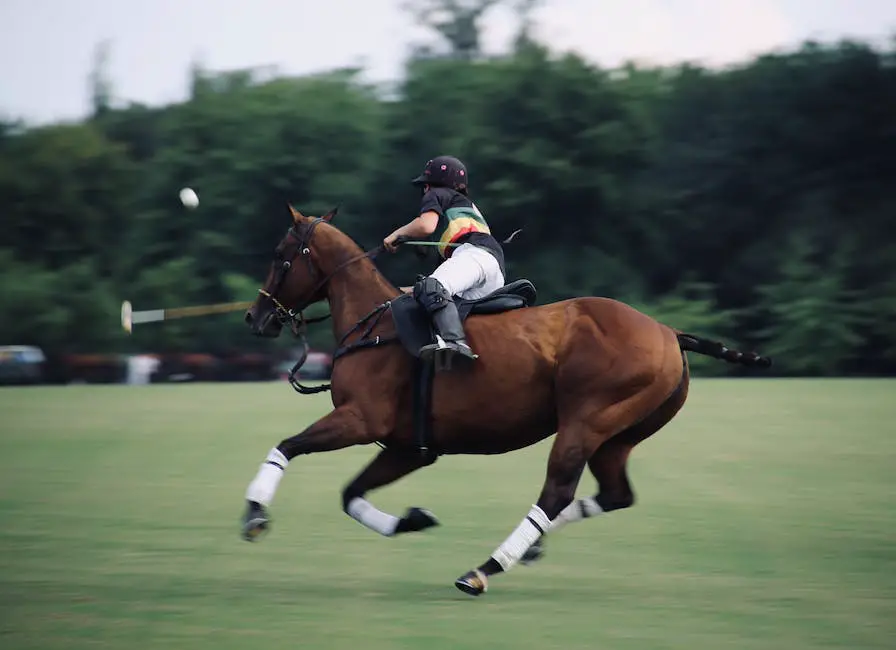
Equestrian Training and Riding Schools
Learning to ride in Switzerland brings with it a robust selection of horse riding schools and programs, each offering a variety of instruction methodologies. Whether you are looking to embrace the adrenaline of show jumping, the finesse of dressage, or the rhythm of endurance riding, there’s a place for every enthusiast to start their journey or refine their skills.
First and foremost, Swiss riding schools emphasize a solid foundation in horsemanship. The concept of ‘Reitkultur’ (riding culture) is deeply ingrained, with a focus on establishing a respectful and harmonious relationship with the horse from the outset. This philosophy resonates through all forms of instruction.
For the beginner, many schools offer group lessons which is a wonderful way to learn not only from instructors but also from peers. These sessions typically begin with the basics of mounting, balance, and control at the walk and trot, gradually progressing to more advanced techniques. Group learning environments foster camaraderie and often a bit of friendly competition, pushing riders to improve together.
Private lessons are also widely available for those seeking personalized attention. In a one-on-one setting, instructors tailor the session to the individual’s specific needs, whether that’s correcting posture, improving jumping technique, or preparing for a dressage test.
Lunge lessons, where the horse is controlled by the instructor on a long rope or ‘lunge,’ allow riders to concentrate on their seat and position without having to manage the horse’s speed or direction. This method is particularly effective for fine-tuning a rider’s balance and developing a deep, secure seat.
For the competitive at heart, many schools in Switzerland also provide specialized coaching for specific events. This can range from show jumping clinics with seasoned competitors to dressage camps that delve into the intricacies of each movement. In addition, cross-country clinics on dedicated tracks cater to eventers looking to navigate natural obstacles with agility and speed.
Intensive courses, often run during school holidays or over a series of weekends, are perfect for a deep dive into riding. They combine practical riding sessions with theoretical lessons in horse care, anatomy, and psychology, providing a comprehensive equestrian education.
Outside of traditional riding schools, enthusiasts can also find programs in natural horsemanship, which teach riding based on the communication and psychology of the horse. These programs often involve groundwork exercises designed to build trust and rapport between horse and rider.
To accommodate the linguistic diversity in Switzerland, many riding schools offer instruction in multiple languages, ensuring that language barriers do not impede learning.
Switzerland’s varied landscape also adds unique opportunities for learning. From mountain trail riding to galloping on wide-open pastures, the natural environment offers a magnificent backdrop for equestrian education, further enriching the experience.
Interactive online platforms and e-learning have also become part of the educational landscape for riders, with courses available on horse nutrition, stable management, and the specifics of each equestrian discipline. This reflects an increasingly modern approach to equestrian education, blending traditional values with new technology.
As Switzerland continues to celebrate its equestrian heritage, the opportunities to learn and grow in this sport seem perpetual. The teaching methods are as diverse as the country’s own topography, ensuring that every enthusiast can find their perfect fit, guided by skilled instructors dedicated to sharing the love and respect for horses that is so characteristic of Swiss equestrian life.
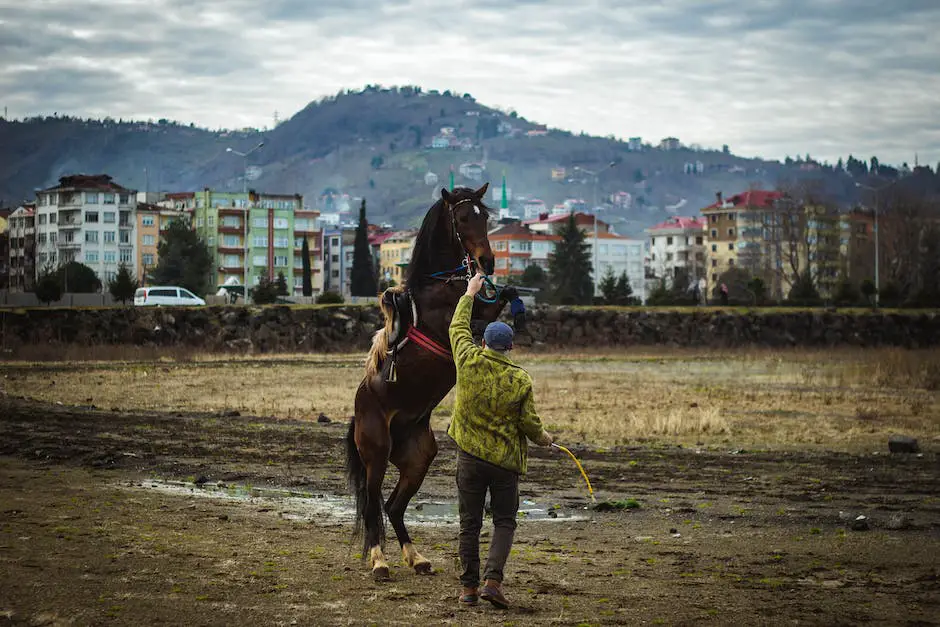
Equestrian Tourism in Switzerland
Exploring Switzerland on Horseback: A Journey to Remember
Ah, Switzerland! Its panoramic vistas, snow-capped mountains, pristine lakes, and deep-rooted equestrian culture beckon adventurers from all walks of life. But to truly savor the country’s splendor, one experiences exceptional awe when embracing the age-old tradition of horseback riding. Not merely as a means of locomotion, but as an avenue into the very soul of Swiss beauty – a rhythmic dance between the landscape, the horse, and the rider.
Trail Riding: Gateway to Natural Wonders
Trail riding in Switzerland presents an idyllic escape into nature with beautifully marked paths winding through diverse terrains including peaceful forests, majestic mountains, and tranquil valleys. These trails offer various difficulty levels, ensuring an inclusive adventure for novices through to experienced riders. The Jura Mountains, with their gentle slopes, are a perfect starting point for those embarking on their equestrian journey.
Equestrian Retreats: Immerse in Rustic Elegance
Imagine waking up in a cozy chalet, greeted by the resonant sounds of hooves on cobblestone. Equestrian retreats in Switzerland often pair delightful accommodation with an immersive riding experience. Engaging in daily rides, one can explore country trails or practice their skills in well-equipped arenas. As nightfall descends, stories of the day’s exploits are traded over communal dinners featuring local Swiss cuisine.
Guided Tours: Historical and Cultural Expeditions
For a touch of history and culture, one may partake in guided tours that traverse the same paths that Romans, knights, and traders once traveled. Guides, often brimming with anecdotes, seamlessly fuse entertainment with education, enriching the riding experience. Riders find themselves journeying through picturesque vineyards, medieval towns, and even tracing the historic Via Francigena pilgrimage route.
Multiday Treks: Embrace the Nomadic Spirit
Thrill-seekers might opt for multiday treks that amplify the exploration ethos. These journeys afford an opportunity to bond deeply with one’s steed as they traverse across regions. Accompanied by pack horses, these tours offer a nomadic touch to the modern-day explorer. Overnight stays range from luxurious lodges to authentic farmstays, proving that adventure does not compromise on comfort.
Winter Rides: A Frosty Fairy Tale Ride
Even during winter, equestrian activities don’t hibernate. Snow-dusted trails provide a magical backdrop for rides, with horses confidently treading through the white terrain. Specialized tours might include destinations like the Engadin Valley where the juxtaposition of brisk winter air and the warmth from a horse’s steady gait proves invigorating.
Family-Friendly Options: Joyful Memories for All Ages
Family trips are welcomed with open arms, offering a wonderful educational and bonding experience. Many establishments offer safe, guided family rides, ensuring even the youngest of riders feel the joy of ambling side by side with these magnificent animals. It is more than a ride – it’s the cultivation of future equestrian enthusiasts.
Horseback Events: Celebrations of Skills and Spirit
One may also synchronize their visit with numerous horseback events. Parades, festivals, and competitions often welcome public spectators. Here, one marvels at the seamless harmony between horse and rider, observing how each subtle cue speaks volumes in their silent language of collaboration.
Conservation and Sustainability: Riding with a Conscience
In acknowledging their environmental responsibilities, Swiss rides often emphasize conservation and sustainability. Maintaining trail conditions and upholding the welfare of both horses and nature ensures the longevity of this cherished pastime.
Conclusion
In Switzerland, horseback riding elegantly threads through the very fabric of daily life, resounding with tradition whilst embracing contemporary influences. It serves as a reminder that to journey on horseback is to connect – with history, with nature, and with the beating heart of a culture that holds the equine spirit in high regard. And whether it’s the steady clop of hooves on a forest path, or the exhilarating rush of a brisk gallop across open meadows, Switzerland, from atop a saddle, is an experience that etches itself indelibly into the soul.
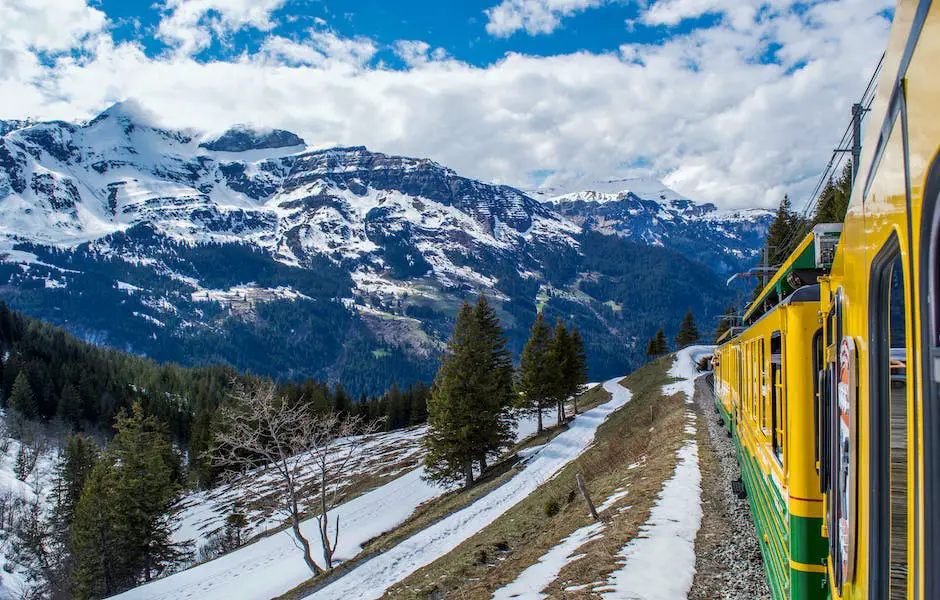
Caring for Horses in the Swiss Climate
Thriving in the Swiss Climate: Essentials of Horse Care
Nestled among the vast mountains and serene valleys of Switzerland lies a thriving equestrian community. Here, horses are not just animals; they are partners that echo the country’s majestic environment. For those with a deep-seated passion for these noble creatures, understanding the nuances of horse care in the Swiss climate and terrain is critical to the success and happiness of both horse and rider.
Swiss weather patterns are as varied as the landscapes, from the warm, dry summers to the cold, snowy winters. These conditions demand a horse care regimen that adjusts with the seasons, ensuring that the horses remain comfortable, healthy, and ready to perform, whether it’s a leisurely trail ride or a high-octane competition.
First and foremost, feeding should align with activity levels and the forage available during different seasons. In the proliferating greens of spring and summer, horses may relish abundant pastures, yet their diets must be balanced to prevent overfeeding and the risk of laminitis. When winter blankets the country in snow, additional high-energy feed such as grains or concentrated feeds can help in maintaining body warmth and compensating for the lack of fresh grass.
Sheltering is equally pivotal in horse care, particularly when considering Switzerland’s cooler regions and altitudinal changes. Although horses are quite resilient, shelter options ranging from spacious stables to windbreaks or covered areas shield them from harsh weather, be it the biting winds or the intense sun. Regular maintenance checks ensure that these sanctuaries remain safe and sturdy through all seasons.
Equally critical is horse grooming, which is not just about aesthetics but health and comfort. Regular brushing not only keeps coats glossy but also increases circulation, which is vital during colder months. Hoof care in Switzerland’s diverse terrain — from rocky alpine paths to soft, grassy fields — is indispensable to prevent injuries and ensure horses can traverse any landscape confidently. Experienced farriers are worth their weight in gold, adept in adapting shoeing techniques to individual needs and seasonal changes.
Parasite control is another cornerstone of horse health, where diligent deworming schedules and manure management prevent the proliferation of internal and external pests. The Swiss commitment to ecological balance often means integrating natural parasite control methods, fostering healthier pastures and horses.
For all the joy and camaraderie horses bring, taking on the responsibility of their well-being is a substantial but rewarding endeavor. Proper care in the Swiss environment not only enriches the lives of these animals but solidifies the bond between human and horse, a synergy as timeless as the Swiss peaks themselves. As enthusiasts delve deeper into their equestrian journey, the satisfaction of mastering horse care in this beautiful, challenging setting becomes part of the grand adventure. With this heartwarming connection, each stride taken is a testament to a mutually nurturing partnership, steeped in respect and shaped by the breathtaking Swiss canvas.
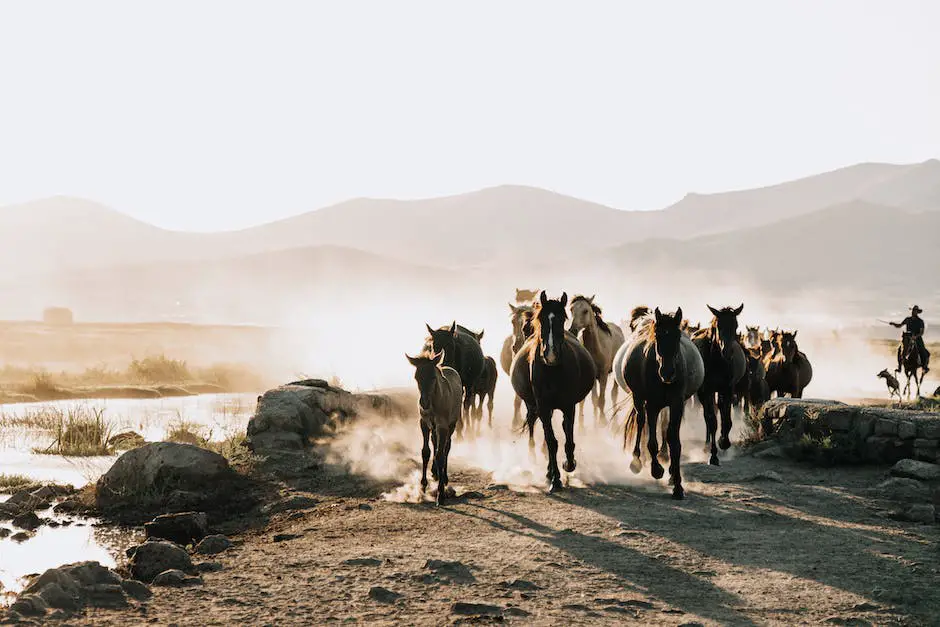
Through the lens of Swiss equestrian culture, we have galloped across the pastoral hills of time, examining the pivotal role that horses have played in shaping the very fabric of this nation’s identity. From the diverse and sturdy breeds pioneering the agricultural pastures to the trainers and riders pushing the boundaries of athleticism within the world’s arenas, Switzerland’s equestrian heritage stands as a monument to the unbreakable bond between man and horse. Whether it be galloping across breathtaking Alps or grooming a horse to perfection in a stable, the respect and admiration for these magnificent creatures is palpably woven into each aspect of Swiss equestrian practice. As the sun sets behind the mountainous horizon, one cannot help but feel a sense of profound connection to the equine partners that have so ardently served and enriched human lives, championing a tradition of excellence that continues to trot elegantly into the future.
